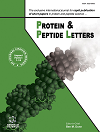- Home
- A-Z Publications
- Protein and Peptide Letters
- Previous Issues
- Volume 30, Issue 10, 2023
Protein and Peptide Letters - Volume 30, Issue 10, 2023
Volume 30, Issue 10, 2023
-
-
A Novel Brevinin2 HYba5 Peptide against Polymicrobial Biofilm of Staphylococcus aureus and Enterococcus faecalis
More LessAuthors: Megha P. Radhakrishnan, Karthika Suryaletha, Iype Joseph, Sanil George and Sabu ThomasBackground: Brevinin2 HYba5 (Peptide 29) is a novel cationic peptide identified from an endemic frog, Hydrophylax bahuvistara. Staphylococcus aureus and Enterococcus faecalis are troublesome biofilm-forming pathogens associated with nosocomial and community-acquired infections and contribute to the severity of infections associated with implanted devices and chronic wounds. Co-existence of both pathogens in biofilm Read More
-
-
-
Challenges and Solutions in the Recombinant Expression of Membrane Proteins
More LessAuthors: Caijuan Liu, Hanxue He, Jie Tian and Yunqi MaMembrane proteins are important components of the proteome and play key roles in many biological processes, such as signal transduction, material transport, cell recognition, etc. Membrane proteins are involved in several fields, and more and more researchers want to understand them. However, the structural properties of membrane proteins make their recombinant expression yield low. This adversely affects the Read More
-
-
-
Estrogen Sulfotransferase SULT1E1 Expression Levels and Regulated Factors in Malignant Tumours
More LessAuthors: Rui Wang, Xia Li, Yangyang Li, Mengjie Zhao, Lida Mi, Weiwei Chen and Jianxiang SongEstrogen plays a key role in the development and progression of many malignant tumours, and the regulation of estrogen levels involves several metabolic pathways. Among these pathways, estrogen sulfotransferase (SULT1E1) is the enzyme with the most affinity for estrogen and is primarily responsible for catalysing the metabolic reaction of estrogen sulphation. Relevant studies have shown significant differences in the expr Read More
-
-
-
The Function and Modification of Human Defensin 5
More LessAuthors: Xin-Yue Chang, Meng-Wei Zhang, Lin-Jie Zhang and Lian-Qin ChaiThe antibacterial and antiviral functions of human defensin 5 lay the foundation for its role as a core host protective component. In addition, HD5 also has the function of inhibiting tumor proliferation and immune regulation. However, everything has two sides; cytotoxic and proinflammatory properties may exist, while HD5 performs physiological functions. Accordingly, the modification and engineering of HD5 are particularly i Read More
-
-
-
Proteomic Analysis by 4D Label-free MS-PRM Provides Insight into the Role and Regulatory Mechanisms of IL-25 in NK Cells
More LessAuthors: Juan Feng, Luoyao Huang, Shuaipeng Yang, Jiasheng Pan, Xiangxing Zhu and Dongsheng TangBackground: NK cells play an important role in immune response, immune surveillance, and metabolism regulation. Therefore, NK cells are involved in the occurrence and development of various diseases, such as infectious diseases, cancer, obesity, and diabetes. IL-25 is a special member of the IL-17 family with anti-inflammatory function. IL-25 can regulate inflammatory response and metabolism via various imm Read More
-
-
-
Activation and Denitrosylation of Procaspase-3 in KA-induced Excitotoxicity
More LessAuthors: Yong Liu, Hui Yan, Jia Zhang, Yu-Ting Cai, Xiao-Hui Yin, Feng Lu, Ying-Kui Liu and Chong LiBackground: It has been reported that activation of glutamate kainate receptor subunit 2 (GluK2) subunit-containing glutamate receptors and the following Fas ligand(FasL) up-regulation, caspase-3 activation, result in delayed apoptosis-like neuronal death in hippocampus CA1 subfield after cerebral ischemia and reperfusion. Nitric oxide-mediated S-nitrosylation might inhibit the procaspase activation, whereas denitrosylation Read More
-
-
-
Expression and Prognostic Significance of Ferroptosis-related Proteins SLC7A11 and GPX4 in Renal Cell Carcinoma
More LessAuthors: Zongtao Ren, Xiaoyu Zhang and Jingya HanBackground: The ferroptosis inhibitory gene solute carrier family 7 member 11 (SLC7A11) and glutathione peroxidase 4 (GPX4) inhibit ferroptosis in carcinoma cells. However, whether SLC7A11 and GPX4 serve as an oncogene in renal cell carcinoma (RCC) remains unclear.Methods: Immunohistochemistry (IHC) assays were performed to assess the expression of SLC7A11 and GPX4 in human RCC tissues. Clinical-path Read More
-
-
-
Biomarker of Pulmonary Inflammatory Response in LUAD: miR-584-5p Targets RAB23 to Suppress Inflammation Induced by LPS in A549 Cells
More LessAuthors: Enyu Yang, Yinuo Hong, Cheng Xuan, Juan Xu, Qianyun Ding, Shuo Zhao, Haihan Ye, Xiaowei Fan, Zhenggang Jiang, Siquan Zhang and Xianfeng DingBackground: Pulmonary inflammatory response (PIR) is one of the prognostic risk factors of lung adenocarcinoma (LUAD), with a high mortality rate.Objectives: This study aims to investigate prognostic microRNA (miRNA) to improve clinical prognosis prediction and postoperative inflammation treatment in LUAD patients.Methods: About 201 differentially expressed microRNAs (DE-miRNAs) in LUAD were mined by d Read More
-
Volumes & issues
-
Volume 32 (2025)
-
Volume 31 (2024)
-
Volume 30 (2023)
-
Volume 29 (2022)
-
Volume 28 (2021)
-
Volume 27 (2020)
-
Volume 26 (2019)
-
Volume 25 (2018)
-
Volume 24 (2017)
-
Volume 23 (2016)
-
Volume 22 (2015)
-
Volume 21 (2014)
-
Volume 20 (2013)
-
Volume 19 (2012)
-
Volume 18 (2011)
-
Volume 17 (2010)
-
Volume 16 (2009)
-
Volume 15 (2008)
-
Volume 14 (2007)
-
Volume 13 (2006)
-
Volume 12 (2005)
-
Volume 11 (2004)
-
Volume 10 (2003)
-
Volume 9 (2002)
-
Volume 8 (2001)
Most Read This Month
Article
content/journals/ppl
Journal
10
5
false
en


